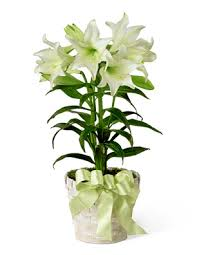Dog Training, It's Never Too Late...
 |
MAX Training to Settle
|
Training isn't just for large dogs. It's important for small dogs to get trained too. Your dog may not be destined for the circus to jump through hoops of fire, but with a little training it will be a much better family pet and your friends will appreciate it too. Basic training is really manners training. We don't expect our children to learn their manners on their own and we can't expect our puppies to either. Whether you choose to train your dog yourself or have him/ her trained for you Golda's Grooming highly recommends formal training for your pet. Even being trained to basic commands such as sit, stay, lay down, and roll over teaches your dog that you are in charge. It helps you to gain control of your pet when it might otherwise not want to listen.
So how do you choose the training method that is most comfortable for you. Training programs designed to train your pet while you're away can be more costly than hands on training on a regular basis, but boarding costs while travelling can also be costly. A two week program may cost anywhere from $400- $1,000 dollars, so if you do have any vacation coming up and you want to avoid weekly trips to the Pet Smart this may be your best bet.
On the other hand it may be more time consuming to take the challenge of personal training on yourself, but it is also a great bonding experience for you and your pet. It shows you're willing to put the time and effort into making your pet the best he/ she can be. You can start by reading up on some common language terms and handling of your pet. You can also find many resources on the internet that discuss the pluses/ minuses of various training methods such as shock collars, whistles, and the use of treats. If you have multiple dogs it is important to not let them all have attention at once. Single out the individual you want to listen to you and reward its behavior on an individual basis.
Here are some basic commands that come in handy. Remember not to reward your puppy or dog when it doesn't complete the command its been asked. It's also to remember that treats are for commands only and not to be given out freely; otherwise it won't be as appreciated.
1. Sit - If your dog likes to jump up on people sit is the best command to start with. To train to sit
Repeat the same sequence as in Step 1, but this time your dog will just follow your empty hand.
- Say “Sit” and bring your empty hand in front of your dog's nose, holding your fingers as if you had a treat. ...
- When your dog sits, say “Yes!” and then give her a treat from your other hand or your pocket.
2. Settle - Settle takes multiple training sessions but is one of the best commands you can give your pet to help it to feel comfortable with its surroundings. Here is a video on how to do it:
3. Stay -
- Call your dog over to the bed or mat you'd like to use. ...
- Hold a treat in front of your dog's nose so she sees that you have something delicious, and then toss the treat onto the mat.
- Your dog will step onto the mat to eat her treat.
- Clap your hands and walk a few steps away to encourage your dog to move off of the mat.
4. Wait -
Take your dog, on a leash, to a door. Ask your dog to ‘sit’. Slowly open the door. If your dog begins to break the ‘sit’ to move through the door tell it ‘wait’ and quickly close the door. Repeat until you can open the door without your dog trying to go through the door.
Now, put your dog in a ‘sit’ then open the door fully. Tell your dog ‘okay’ and encourage it to move through the door. As it moves forward tell it ‘yes’ and give it a treat. Repeat 10 times.
Next, take your dog outside on a leash and let it wander around. Randomly say ‘wait’ in a neutral but moderately loud tone. If it stops and looks back to you say ‘yes’ and give it a big jackpot (lots of treats thrown on the floor in front of it). Repeat 20 times over several days
5. Uh Uh - We prefer the term uh uh to the command no. We say no to our children and we don't want our pup to confuse who is being talked to. By using a separate command for the word no the dog is quicker to respond.
6. Leave It - Leave it is perfect when your dog is eyeing the delicious cheeseburger on your kids plate. With the command leave it your dog will turn its head away from tempting foods that are placed in front of it. Let's take a look at the video:
Training information provided references:
For more information on dog care check out the Golda's Grooming Website.
"We Care About Your Pets" 3629 Western Ave. Knoxville, TN 37931 Right off of I-40. Or
Schedule an Appointment for a Pet Grooming via email here:
































